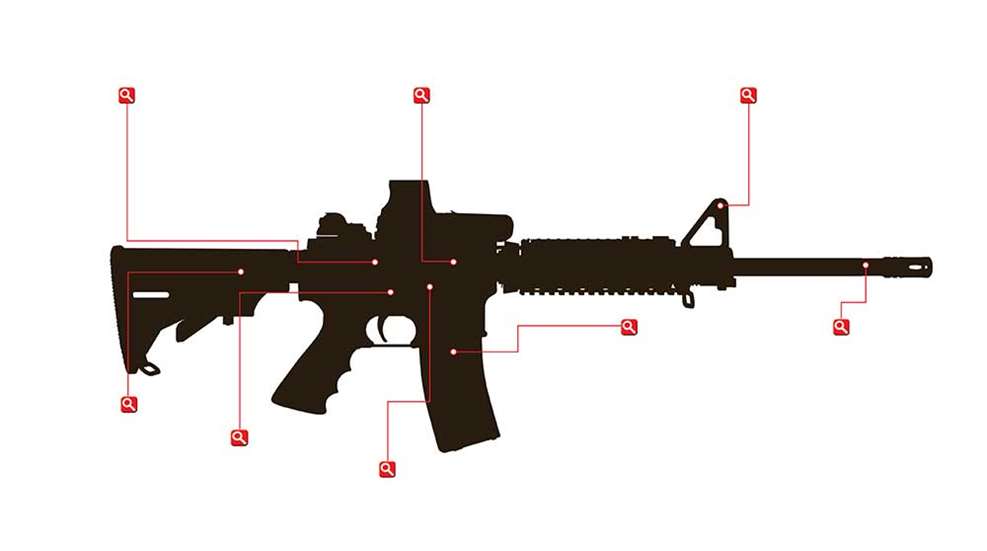
Regular maintenance of machinery is important to ensure it functions correctly and with minimal wear and tear on its components. Like any other tools that are used heavily, AR-style firearms’ parts occasionally wear out or fail under stress, even with a strict maintenance and cleaning routine. Some parts are more likely to give out than others, so staying ahead of them and keeping a spare (or two) on hand are keys to minimizing down time and maximizing trigger time.
Much of my work involves performing technical inspections (T/I) of AR-15s and fixing problems or improving overall performance of these popular firearms. So I encounter a wide variety of brands and models—from bargain-basement-priced, basic carbines to exclusive rifles that set their owners back a month’s wages (or more). Some parts failure trends have emerged over the years and are reflected here in the order of frequency or likelihood that I encounter them.
I have grouped them into two categories, those components likely to fail prematurely and those that tend to wear out faster than other parts through normal use. The distinction may be irrelevant when your firearm stops working unexpectedly, but parts that fail typically do so without warning and usually cause a complicated malfunction. Parts that wear out tend to do so gradually and may be observed through their decline and avoided through preventative maintenance.
AR-15 Failure Points
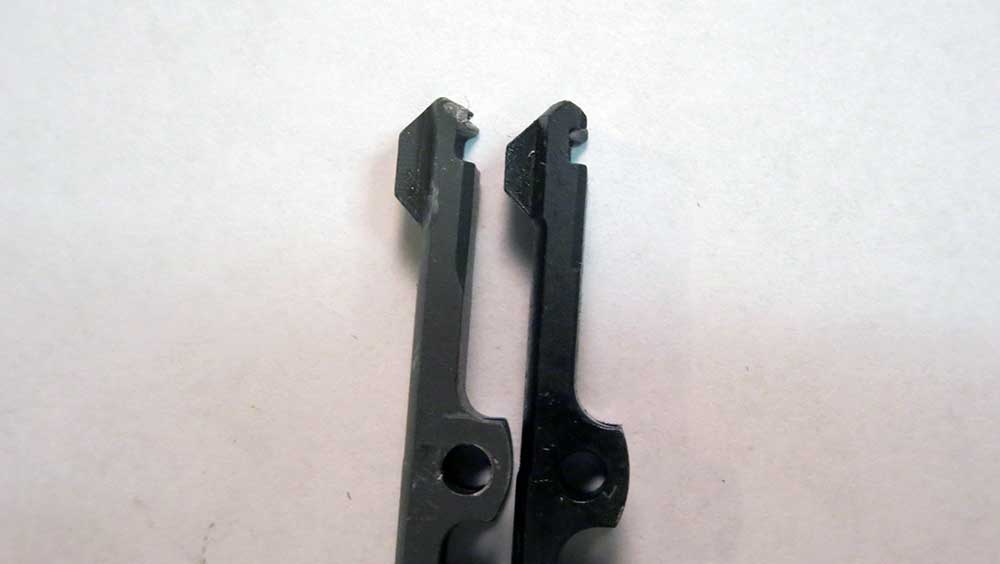
Extractor: If I had to pick one part that is most likely to fail without warning, it would be the extractor. That goes for most firearm types I encounter but in the case of ARs, extractors are the number one component I see that crack, chip or fracture—especially where steel-cased ammunition has been used steadily. This tends to happen in the thinner, extractor groove portion or on the lip itself, leaving little or nothing to grab a case rim.
Burrs in the groove can also cause problems so regularly cleaning your extractor and inspecting it closely is a good idea. While subsurface cracks require Non-Destructive Testing (NDT) that is out of reach for most shooters, visible cracks or chips are signs of imminent failure and the need for immediate replacement. Extractor springs and their buffers also need replacing once they remain so compressed (often appearing smashed to one side) that they no longer provide adequate extractor tension.
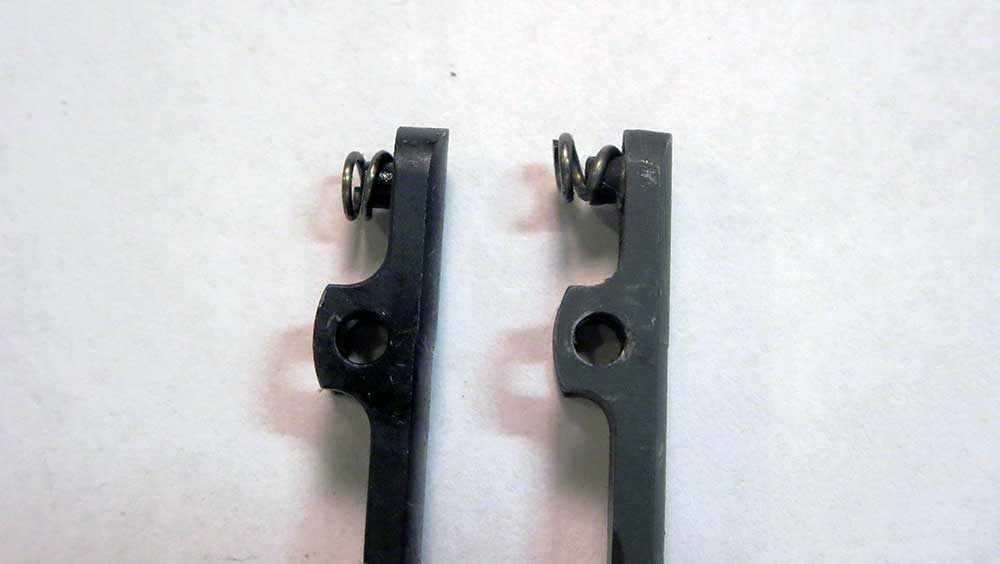
Firing Pin Retaining Pin: Although the cotter-type of FPRP is more likely to bend from the firing pin slamming into it as a result of high pressure loads, they do occasionally fracture one or both legs. I replace bent pins whenever I encounter them just to be safe. The T-shaped firing pin retaining pins commonly found in large frame ARs sometimes lose one of their forks on the split end. A firing pin retaining pin that is missing a leg or which is severely bent loses its spring tension, allowing it to fall out of the carrier easily. Though rare, it is possible for a FPRP to work out just enough during the firearm’s cycle of operation to get bent between the bolt carrier and receiver wall, causing a very difficult-to-clear malfunction.
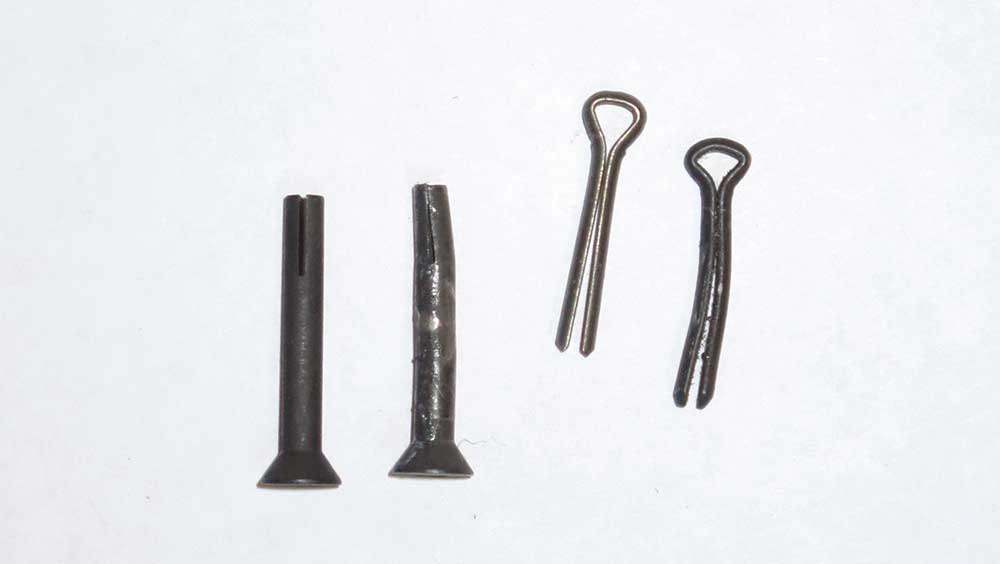
Gas Rings: Direct Impingement (DI) AR gas rings withstand a great deal of heat and pressure, necessitating eventual replacement. Occasionally one or two rings will fracture and leave a much wider gap than is normally seen. I have had a couple gas rings completely fail (usually when new) and bind up the bolt inside the carrier with mangled pieces of gas ring, but that is fortunately very rare.
Most often, the rings simply wear down over many thousands of rounds fired, letting enough gas sneak around them that the AR starts to get finicky. While one-piece gas rings are far less likely to fracture, they also wear out much faster than do 3-piece ring sets. If your bolt flops in and out of the carrier through gravity alone when turning the bolt carrier group end over end, it’s time to replace your ring(s).
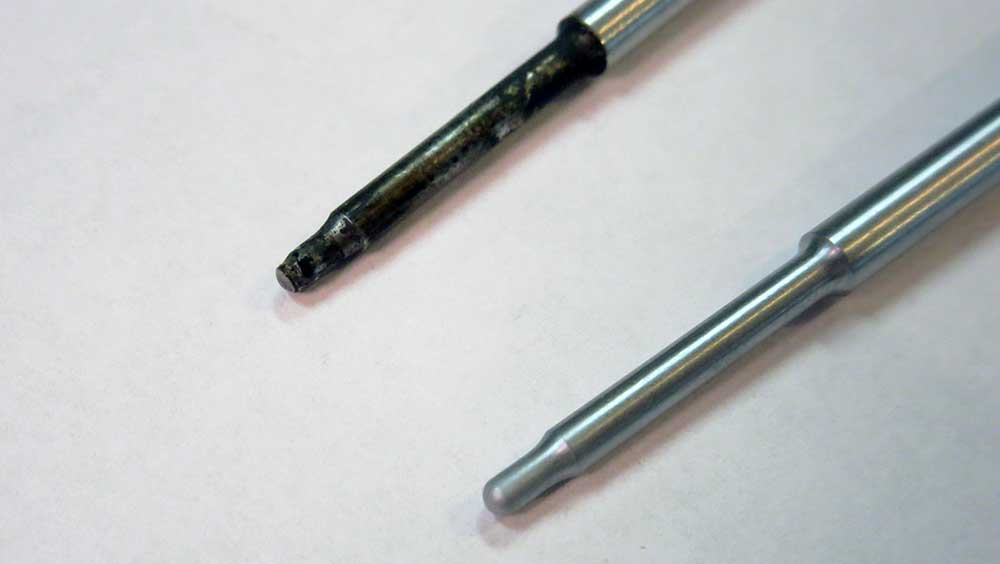
Firing Pin: Though infrequent, a broken firing pin tip will shut down your shooting as fast as any other part failure. The most common that I have seen are in non-standard AR calibers such as .22 LR and 7.62x39, where the firing pin tip geometries are altered to allow proper function. I have never spotted a cracked firing pin that is on the road to breakage, but I have seen them with enough tip damage (usually due to gas jetting from pierced primers) to require replacement.
Carrier Key Screws: Bolt carrier key screws keep the gas seal needed for DI guns to operate correctly. Some piston and blowback operated ARs also have gas keys or carrier protrusions in the key area that are bolted in place. The latter serve as bolt carrier guides and operating rod/rod end impingement surfaces. The carrier key needs to be securely attached to the carrier’s body in order for the bolt to cycle correctly.
A good thread-locking compound combined with correct torques (per manufacturer specs) and staking normally keeps the mounting screws tight but when steps are skipped, these screws can loosen and compromise the key. The screws can also break, though it tends to happen to one and not both at the same time. Drilling out a broken screw is not for the faint of heart but a ‘smith can usually do it to salvage the carrier. The open end of the carrier key also takes a beating if a DI gun’s gas tube is not correctly aligned, so keep an eye on this spot during maintenance and have the situation remedied if you see it getting chewed up.
Operating Rod: Piston-operated ARs sometimes develop problems with their operating/pusher rods. I have repaired one such gun that actually had a fixed operating rod which had bent just enough to bind as it passed through the barrel nut and upper receiver. Replacing the bent rod is the only reliable fix there. I have also noticed some operating rods develop rough spots or slight burrs where they pass through steel bushings in the upper receiver or near the front where they slide in and out of a piston cup. Careful polishing of the rough spots (and corresponding areas they pass through) has fixed the problems I have encountered so far. Neither issue is technically a breakage but either of them can halt proper function. Regular inspection of the operating system from gas regulator back to bolt carrier is a good way to spot any developing problems.
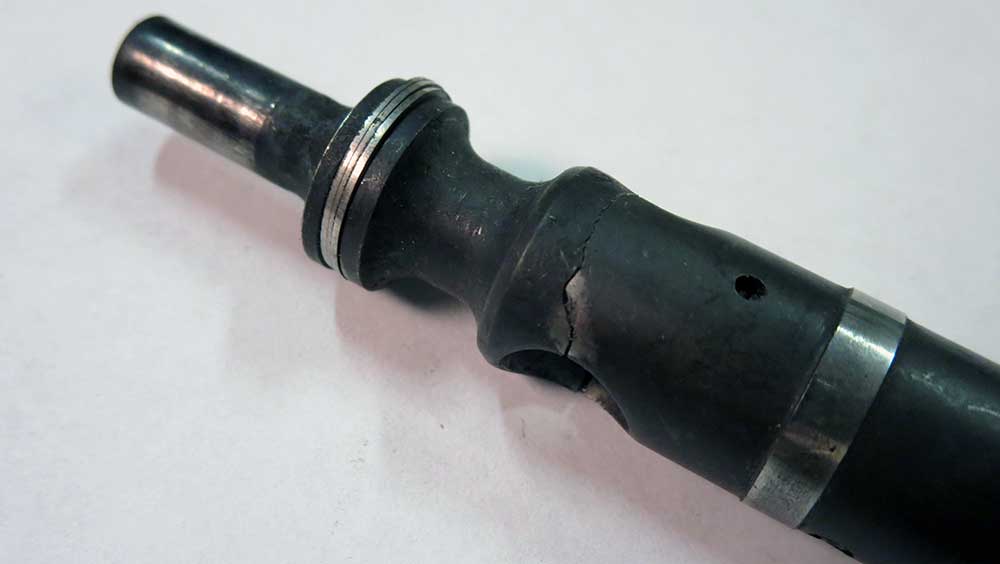
Bolt: Your AR’s bolt takes a lot of abuse but fortunately it was designed with just that in mind. Several different steel types are used for bolts and some last longer than others. Regardless though, the failures tend to be in one of two areas. Bolt bodies can fracture adjacent to the cam pin hole—usually on one side but occasionally breaking on both sides and separating into two pieces. This is typically a long-term wear issue and can sometimes be spotted as a hairline surface crack through close inspection with good light and magnification or once again through the use of NDT equipment.
Locking lugs are the other potential breaking point. Unless a lug breaks off into the chamber area and jams things up, shooters often do not realize a lug breakage has happened until they clean the AR’s bolt. Even if your AR is still functional with a sheared bolt lug, if you are not in the middle of a pitched battle you should replace the bolt with a new one that has been properly head-spaced before shooting further.
Forward Assist Pawl Roll Pin: This little pin is among the tiniest parts in an AR and in the unlikely event it fails, you will most likely know as soon as it happens. The roll pin joins the two halves of the forward assist assembly (button and pawl) together and holds captive a small detent and spring. When it fails, the small parts seem to evaporate but the pawl—that tooth that sticks through the upper receiver wall and impinges on the bolt carrier when pressed—will wedge itself between the bolt carrier and receiver wall.
The only way I have managed to get such an upper apart was to remove the lower receiver’s buffer group and receiver extension, then separate the two and carefully drive the bolt carrier out with purpose-made tooling. It is a painful process and is due to a simple material failure in an area that is not easily inspected. Fortunately this is a very rare event. In my three-plus decades of AR-15 use, I have heard of it once, seen it once and had it happen to a rifle I built for someone else once.
Gas Block Roll Pin: This is another small pin that thankfully does not often fail. It is easy to keep an eye on when the gas block is exposed outside the handguard. If the pin is covered by your AR’s fore-end, you can use a set of needle-nosed pliers to gently tug the gas tube rearward from time to time to ensure it is firmly in place inside the gas block or remove the handguard during maintenance to visually inspect the pin. My Knight's Armament SR-25’s gas tube roll pin disappeared during a string of fire while I was in SF sniper school. I simply reseated the gas tube, inserted a small Allen wrench through the hole, bent it into a “C” and proceeded to finish my shooting for the day before an armorer replaced it properly.
Gas Tube Roll Pin Hole: This is the weakest portion of the stainless steel gas tubes used on direct impingement systems because it is through-drilled for the afore-mentioned roll pin. Gas tubes do not often fracture here but it does happen, allowing the tube to float freely out of the gas block and halting function. Because this is the front end of the tube, it is inserted into the gas block and completely concealed from visual inspection.
AR-15 Gradual-Wear Issues
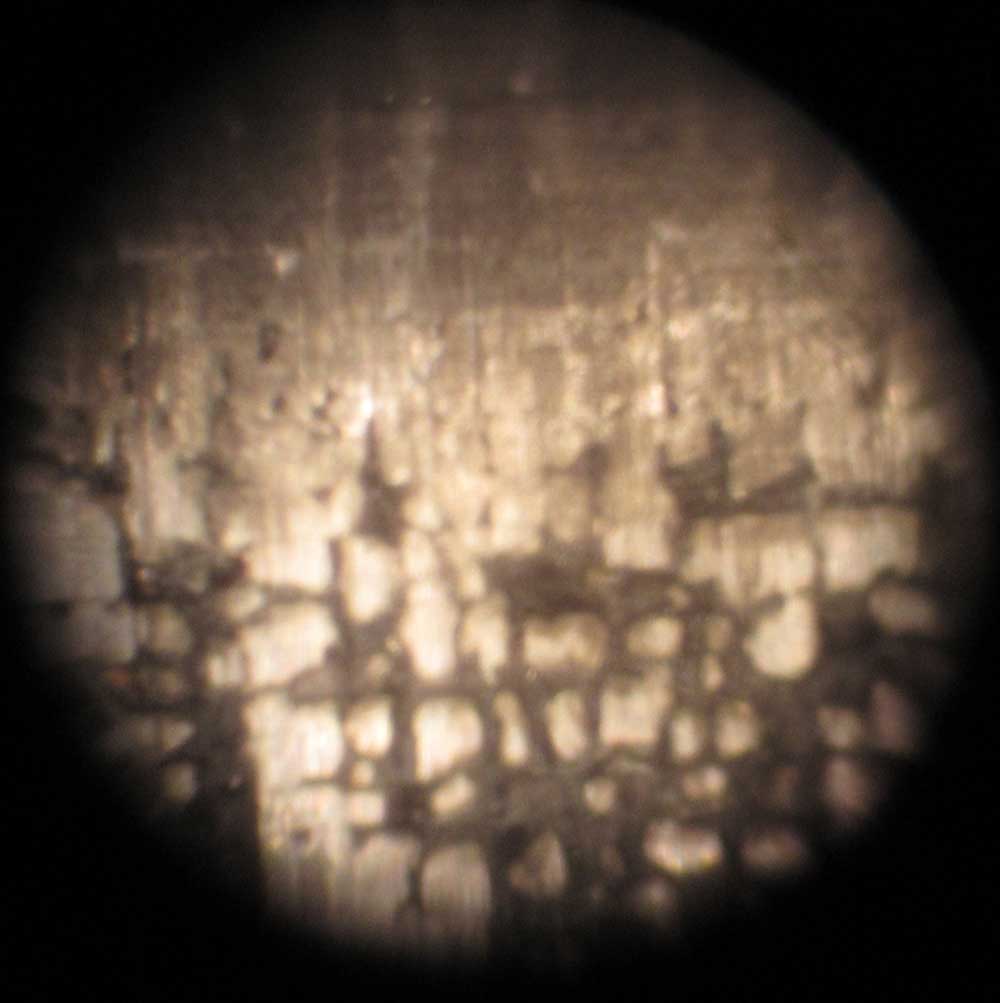
Barrel: If you do a lot of shooting, you may have already experienced the “joy” of a shot-out barrel. An internal inspection via bore scope combined with regular throat measurements can often track a burned up barrel in the making but when it goes out for good, it happens in an instant. By that I mean one day your barrel is as accurate as it ever was and then suddenly it turns into a shotgun. If that happens and you have ruled out bad ammo, sighting system failure and shooter error, there is a fair chance that your barrel is a goner. There is no set number of rounds when this happens but thankfully, most common calibers last at least into the thousands of rounds.
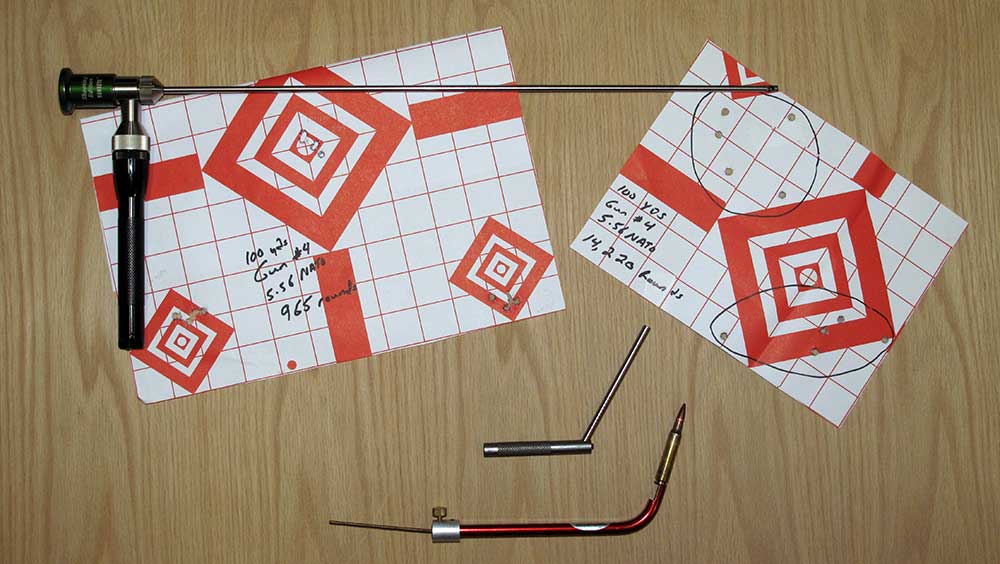
Common rifle and carbine barrels intended for heavy use will routinely go into the 15,000 to 30,000 round range before they need replacing. However some magnum chamberings can shoot out a barrel in just a few hundred rounds. How the firearm is used and maintained also affects barrel life. If you have a bore scope, watch for heat-checking from the throat forward. This condition appears similar to the cracked surface of a mud flat after water has dried up. Watching your barrel’s throat advance by measuring it regularly with a throat erosion gauge can also help you track long term wear. Both services can be provided by a gunsmith, preferably starting as early in a barrel’s life as is possible.
Action Spring: More commonly known as the buffer spring, this component needs a certain amount of “springiness” to drive the buffer and bolt carrier group forward in order to complete the cycle of operation. Buffer springs are pretty resilient, usually lasting many thousands or tens of thousands of rounds. I always check them when I perform a technical inspection an AR to ensure they are close to new length, which differs based on the size of AR and type of receiver extension used. My rule of thumb is that once the action spring has been permanently compressed to the point where it is around an inch shorter than a new spring or is permanently bent, I replace it.
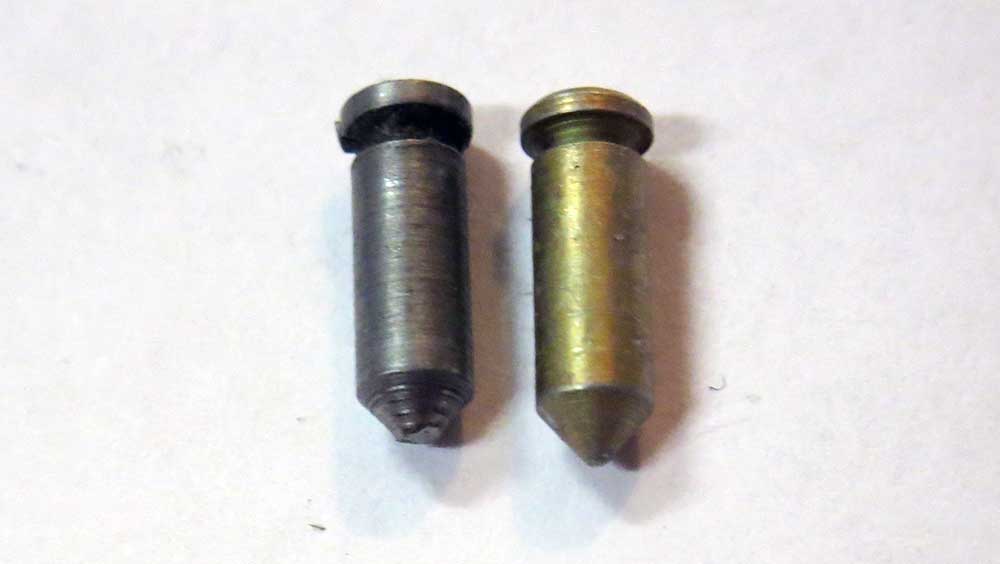
Selector Detent: This stubby, nail-shaped pin is what helps keep your selector switch in the last position you rotated it to. A few gazillion cycles of the selector will round off the tip of the pin, allowing the selector rotate too easily. Removing the pistol grip will allow you to check the pin’s tip. If you replace it, put a drop of oil on the tip of the new pin and replace its spring while you are in there.
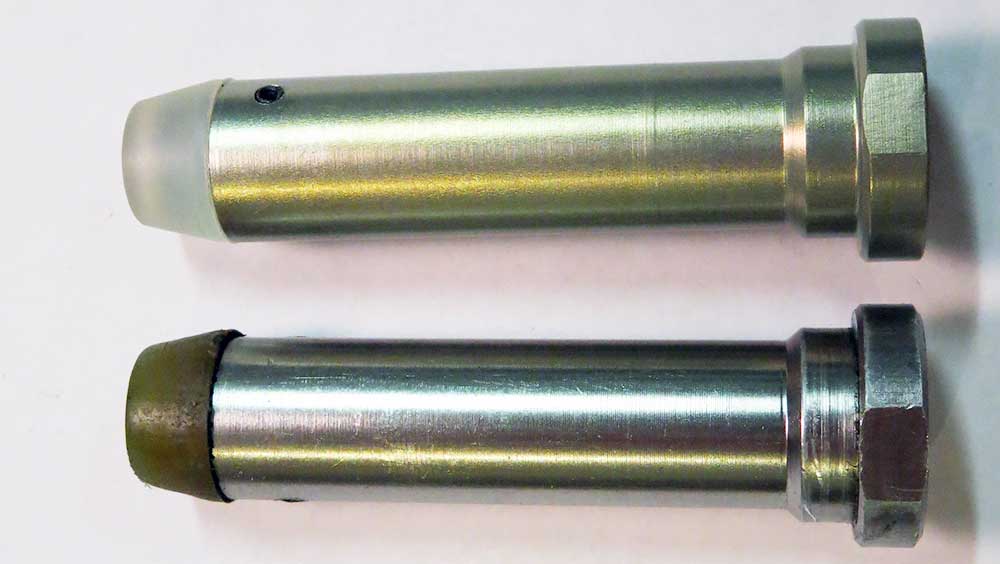
Buffer tip: The wedge-shaped, synthetic tip on at the rear of your AR’s recoil buffer should last many thousands of rounds but its life can be shortened by anything that increases the force or frequency with which it impacts the rear of the receiver extension. When new, the tip’s outer diameter is nearly the same as the aluminum buffer body. Once it mushrooms out, the amount of dampening it provides is reduced, affecting component wear, bolt carrier speed and overall system timing.
The tip shortens as it mushrooms out too, which can allow the carrier on .308-sized ARs to go too far rearward, impacting the front of the receiver extension, the lower receiver, or both. Replacing the buffer tip is not particularly difficult. Aftermarket buffer tips made of proprietary materials are available from KAK Industries and Blackjack Buffers for about the same cost as stock buffer tips.
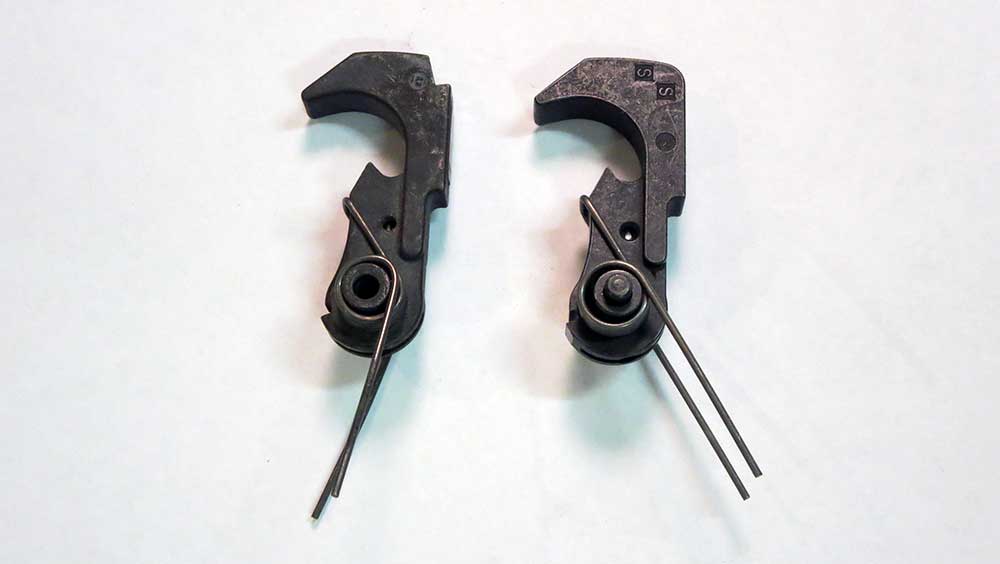
Hammer Spring: Back in the days when match spring sets were used to lighten Mil-Spec AR triggers, it was not uncommon to have to replace hammer springs periodically. They still do wear out but the advent of very high quality, drop-in trigger assemblies has brought better springs to the game as well. When a hammer spring stops playing ball, the result is an increasing frequency of light primer strikes/failures to fire. Replacing the hammer spring is not difficult, just be sure you install the new one exactly as the old one was installed.
Handy Spares to Have On-Hand for Your AR-15
Since the most-common failure points on an AR-15 are simple enough to fix, a few spare parts are worth having on hand. An extra extractor (including spring and rubber buffer) is probably the number one item to have. After that I recommend having an extra set of gas rings (if needed on your bolt), firing pin, firing pin retaining pin and extractor pin (because they get lost easily) are worth having. Some pistol grips will hold that complete ensemble but even if yours will not, having them in your range kit is not a bad idea and cost is minimal.
Some of my military and law enforcement customers require a spare bolt assembly for their critical parts kits. I always ensure spare bolts are properly head-spaced to the specific barrels they are intended for and you should do the same. A bolt that fails to headspace can create a very dangerous condition and should not be used with that barrel. Those are the items most easily replaced if broken, worn out or lost but you can expand your parts kit outward from there based on your budget and skill level.
When in doubt, be sure to have someone qualified to work on your AR-15 give it a professional once-over to be sure it remains in top working order.




































